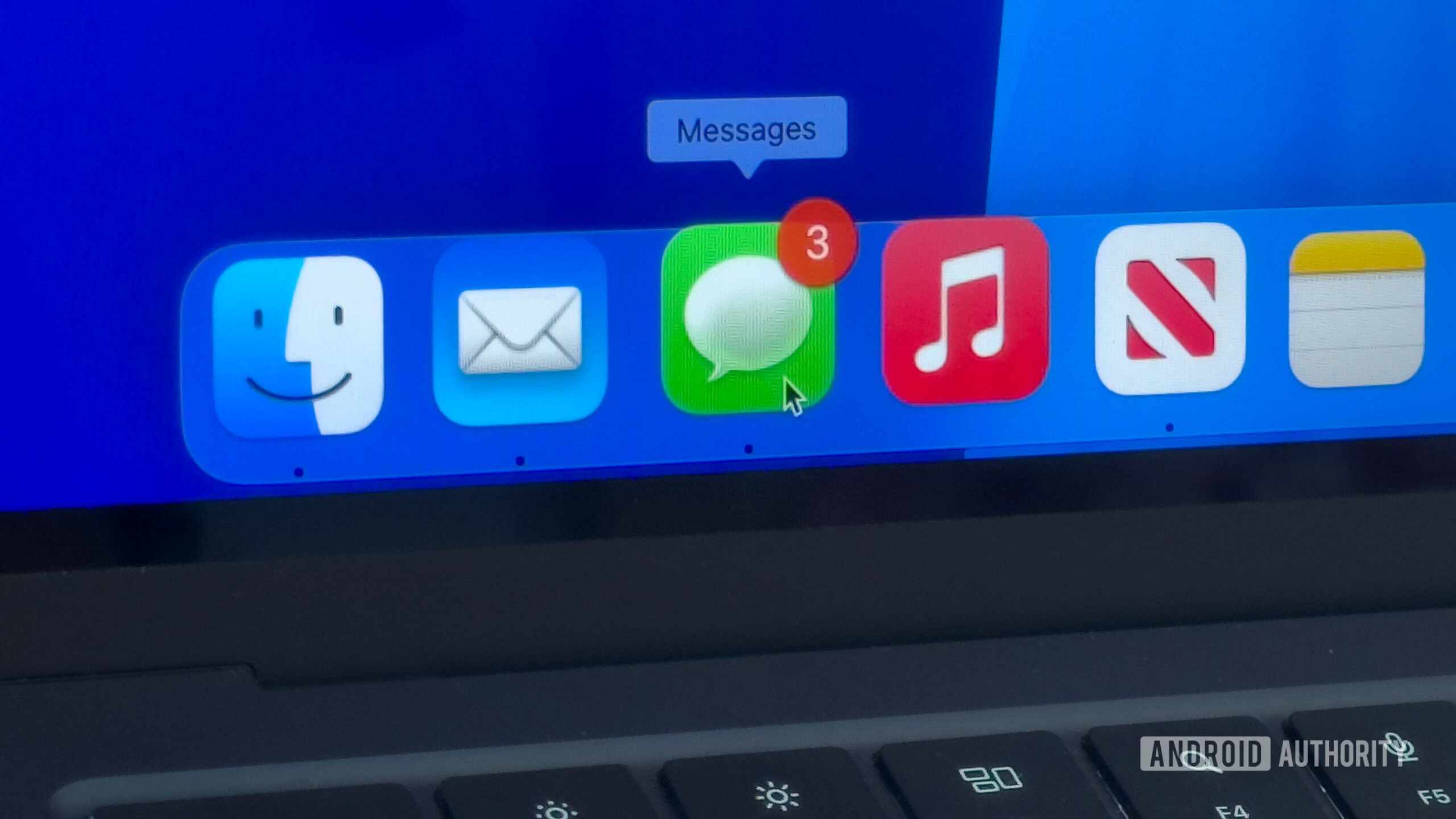Affiliate links on Android Authority may earn us a commission. Learn more.
How to use Apple Intelligence on a Mac
November 21, 2024
Apple Intelligence is now available to all Mac computers with an Apple M-series chip. While it’s not available by default, everyone with a supported Mac can request access to it, and we know many of you are already all over it. If you have no experience with it, and we assume most of you don’t right now, it can be a bit confusing to figure out how to use Apple Intelligence on a Mac. We’re here to show you the ins and outs.
QUICK ANSWER
You can use Apple Intelligence to write and check any text, simplify your notifications, create website summaries, access quick smart replies in Messages/Mail, edit distractions out of images in Photos, and much more. Keep reading for more details.
JUMP TO KEY SECTIONS
Editor’s note: We used an Apple MacBook Air M2 running macOS Sequoia 15.1.1 to formulate these instructions. Keep in mind some steps may be slightly different in the future, depending on your device and software version. Additionally, more Apple Intelligence features will be added in the future. We will update this post when they do.
How to sign up for Apple Intelligence
First things first. As already mentioned, Apple Intelligence is available to all Apple M-series Mac computers, but it isn’t enabled by default. You have to get on a waitlist and join the Apple Intelligence beta. We have a full guide for joining the Apple Intelligence waitlist here. You can learn all about the requirements and other details there.
The TL;DR is that you have to click on the Apple menu, then go to System Settings > Apple Intelligence & Siri > Join the Apple Intelligence Waitlist.
After this, just wait, and your Mac will let you know when Apple Intelligence is ready. It usually takes a few hours. I requested access right before bed, and it was ready to go by the time I woke up.
Let’s start with Writing Tools
The first thing you want to try, and likely one of the Apple Intelligence features most will use more often, is Writing Tools. It basically allows you to highlight text and either summarize, proofread, or rewrite text. This will work on nearly any text, in almost all apps, whether it’s your own writing or not.
How to use Apple Intelligence Writing Tools:
- Find any text and highlight it.
- Right-click on the highlighted text. You can also tap with two fingers or use Ctrl + click.
- Hover over Writing Tools, then select Show Writing Tools. You will also get a bunch of shortcuts, so you can go straight to what you want to do, if you prefer.
- You will get all the options of what you can do with the highlighted text. These include Proofread, Rewrite, Summary, Key Points, and more.
Notification summaries and decluttering
My Mac notifications can get so messy that it’s almost too much of a task to go through them. I usually just clear them all. Apple Intelligence is here for the rescue, though! It uses artificial intelligence to offer summaries, or analyze your notifications and only show the important ones.
How to enable and customize Apple Intelligence notification summaries:
- Click on the Apple menu.
- Select System Settings.
- Pick Notifications.
- Click on Summarize previews, and enable Summarize Previews.
- Go down the list of apps and pick which you want to turn previews on or off for.
How to enable the Reduce Interruptions Focus mode:
- Click on the Apple menu.
- Select System Settings.
- Pick the Focus tab.
- Click on Reduce Interruptions.
- Choose your preferences.
- When ready to enable this focus mode, click on the toggles option in the top-right corner, click on the Focus option, and select Reduce Interruptions. You can also choose for how long.
Try Website summaries
Is that website text too long? Sometimes, you just want the TL;DR, and Apple Intelligence can get it for you. The only trick is it only works in Safari right now, so keep that in mind.
How to summarize a website with Apple Intelligence:
- Launch Safari and go to the website you want to summarize.
- Click on the page options icon to the left of the URL. Check the first screenshot below to see how it looks.
- Select Show Reader.
- At the top of the page, you will see a Summarize option. Select it.
Siri is superpowered by AI
Siri is now improved by Apple Intelligence. You can ask Siri questions about your Apple products, such as how to do things on your iPhone, iPad, or Mac. It will also now recall the last requests, and you can follow a conversation like you normally would. For example, you could ask Siri something like “What is the most popular Mexican dish?” and the answer will be tacos. Right after this, you can ask, “Can you find me a recipe to make them?” and it will provide options.
Also, you can now type to Siri. Simply activate it on your Mac and a text box will show up. This is helpful when you don’t want to voice out the hotword or commands. By default, you can pull up Siri by saying “Siri,” “Hey Siri,” or pressing the Command key twice.
Check out improvements in Messages

If you use the Messages app often, you’ll also find some Apple Intelligence improvements here. For starters, you’ll see summaries of new messages without entering the conversation. They will appear under the conversation, on the left pane.
When in the conversation, you will also be able to use Smart Reply. Apple Intelligence will analyze your messages and show suggested replies to avoid all the typing. When the suggestions show up, just select them and send away.
If you don’t like message summaries, you can turn them off by launching Messages, then going to Messages > Settings > General and deselect Summarize messages.
Harness the power of AI in the Mail app
Mail is likely one of the apps where you will find Apple Intelligence more helpful, as there are more AI features there. For example, when on your inbox, you can click View in the menu bar and select Show Priority. AI will determine which emails are likely time-sensitive and put them up top for you.
Also, you can use Smart Reply whenever you’re replying to any email. Suggestions will just appear in the text field. Mail will also automatically create summaries of your emails, and display them right under them. You can also click on any email and select Summarize.
If you don’t like these summaries, you can turn them off by going to the Mail app and navigating to Mail > Settings > Viewing. Deselect Summarize Message Previews.
Use Apple Intelligence to edit images in Photos
The Photos app also gets a couple of really nice improvements with Apple Intelligence. AI can help you find images by writing a description of what the photo depicts, for example. When you open the Photos app, just enter a description of the photo you want to find. For example, I used “photo of ring on hand,” and this is what I got:

You can also use the power of artificial intelligence to remove parts of an image that may be distracting.
How to remove distractions from photos using Apple Intelligence:
- Launch the Photos app.
- Open the image you want to edit.
- Click on Edit.
- From the options above, select Clean Up.
- Click and hold on the item you wish to remove, then highlight it completely.
- Let Apple Intelligence work its magic! It will remove the distraction for you and try to create a fitting background.
- Hot Done when… done.
FAQs
Apple Intelligence is only available to Mac computers with an M-series processor, so M1 or newer. It also requires at least macOS 15.1, and you need to sign up for it.
All currently announced Apple Intelligence features should be available around March 2025.
The time to get access to Apple Intelligence through the waitlist can vary. It usually takes a few hours, though. In my case, I requested access, went to sleep, and when I woke up, it was ready to go.
Thank you for being part of our community. Read our Comment Policy before posting.